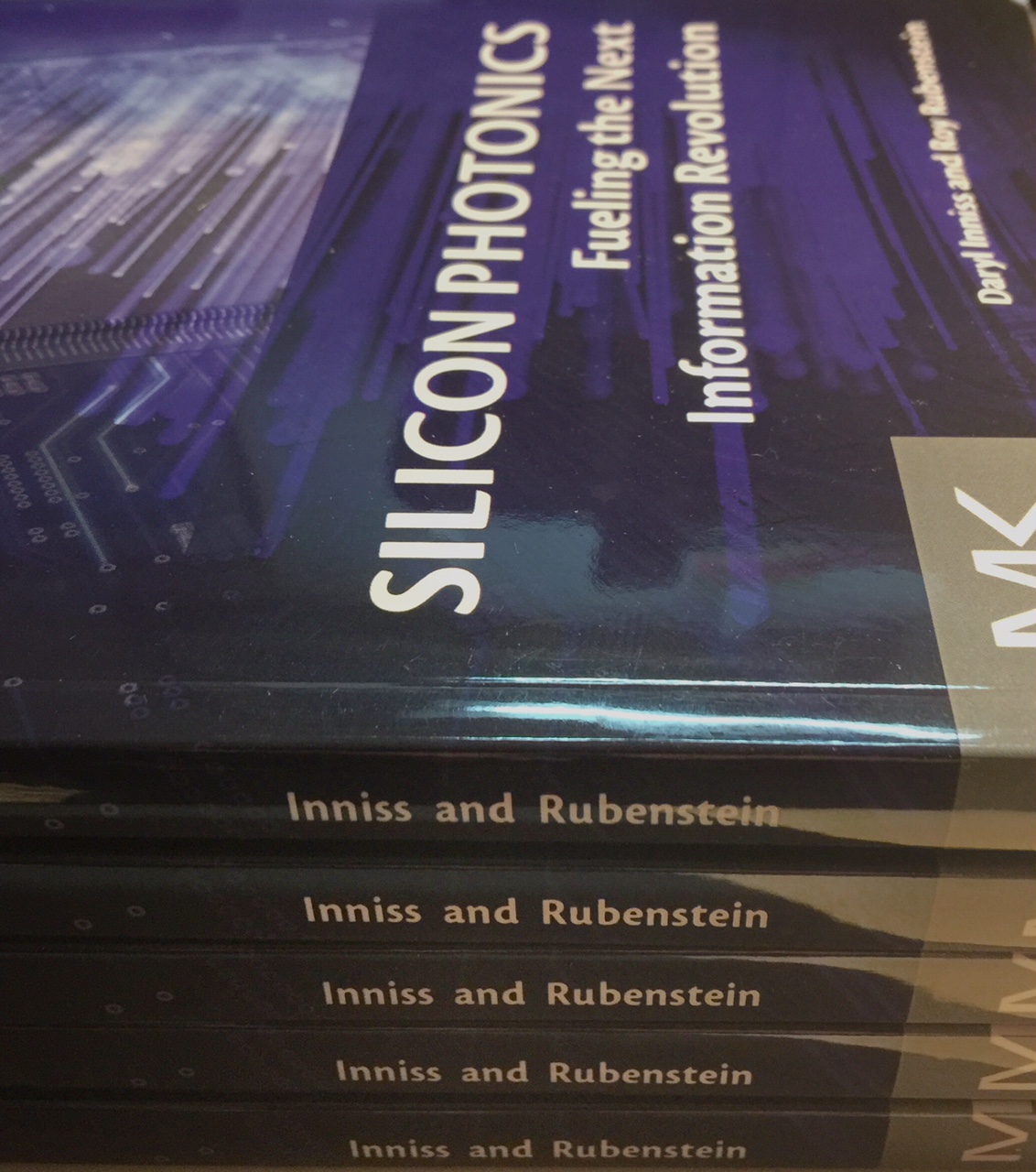
"A great job on the topic of silicon photonics. It is refreshing to read a book on an important topic that reflects on trends and what is important, rather than just a stapling together of research papers."
John Bowers, Director, Institute for Energy Efficiency Kavli Professor of Nanotechnology ECE and Materials Departments, University of California, Santa Barbara.
"It is very challenging to provide value in a book to such a diverse audience, but this book is a solid introduction for technologists, managers, and lay-persons. I would recommend this book to anyone with a desire or need to understand Silicon Photonics."
Blaine Bateman, president of management consultancy, EAF LLC, author of a detailed report on silicon photonics.
Silicon Photonics: Fueling the Next Information Revolution is the title of the book Daryl Inniss and I have written.
We started writing the book at the end of 2014. We felt the timing was right for a silicon photonics synthesis book that assesses the significant changes taking place in the datacom, telecom, and semiconductor industries, and explains the market opportunities that will result and the role silicon photonics will play.
Silicon photonics is coming to market at a time of momentous change. Internet content providers are driving new requirements as they scale their data centres. The chip industry is grappling with the end of Moore’s law. And the telecom community faces its own challenges as the bandwidth-carrying capacity of fibre starts to be approached.
Silicon photonics will be a key technology for a post–Moore’s law era, and it will be the chip industry, not the photonics industry, that will drive optics
Each of these changes – the data center, the end of Moore’s law, and a looming capacity crunch – is significant in its own right. But collectively they signify a need for new thinking regarding chips, optics, and systems. Such requirements will also give rise to new business opportunities and industry change. Silicon photonics is arriving at an opportune time.
Despite this, the optical industry still questions the significance of silicon photonics while, for the chip industry, optics remains a science peripheral to their daily concerns. This too will change.
The book discusses how silicon photonics is set to influence both industries. For the optical industry, the technology will allow designs to be tackled in new ways. For the chip industry, silicon photonics may be a peripheral if interesting technology, but it will impact chip design.
The focus of the book is the telecom and datacom industries; these are and will remain the primary markets for silicon photonics for the next decade at least. But we also note other developments where silicon photonics can play an important role.
Silicon photonics will be a key technology for a post–Moore’s law era, and it will be the chip industry, not the photonics industry, that will drive optics.
The book is published by Elsevier’s Morgan Kaufman and is available as a paperback and on Kindle.


